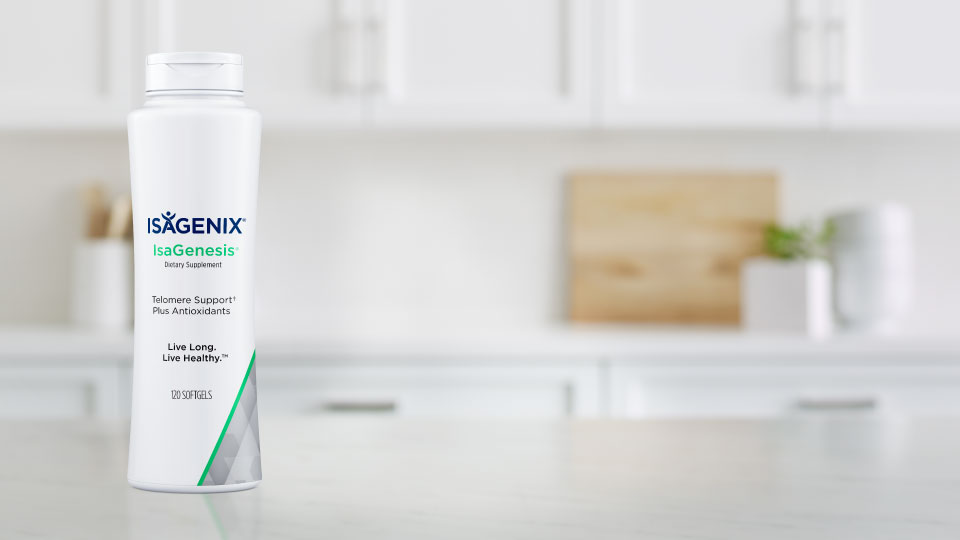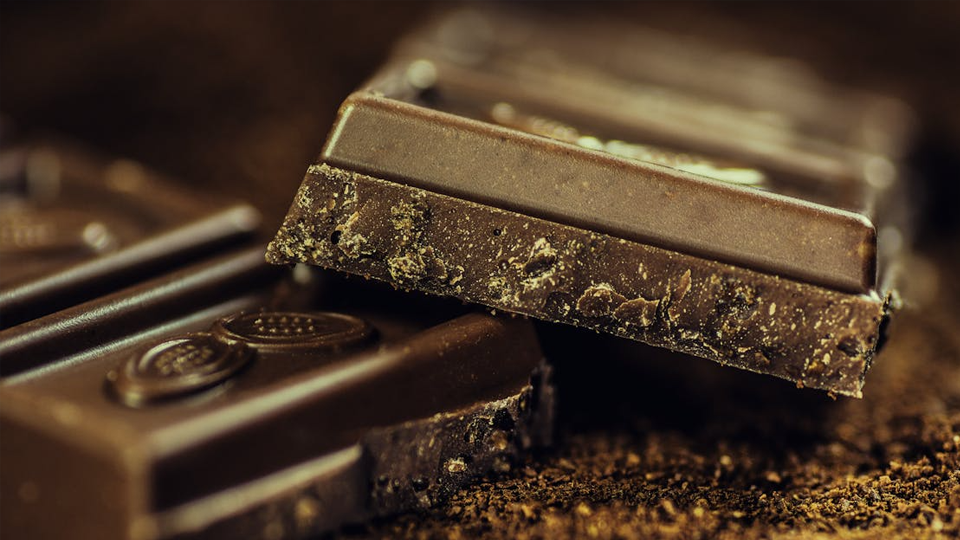Aging is an inevitable part of life, but how you age is something you can exert some control over.
From regular physical activity to nourishing and caring for your body, healthy choices can play a beneficial role in the aging process. Beyond a healthy lifestyle, research has pinpointed specific herbs and nutrients that can support more youthful aging, specifically through the protection of your telomeres.
What Are Telomeres?
Telomeres are the protective DNA sequences at the end of each chromosome. They are essential to maintaining genome stability within the cells, and researchers have honed in on telomeres as a marker of biological aging.
Over time, our telomeres begin to gradually shorten, which is naturally associated with normal aging. Early telomere shortening is linked to lifestyle factors such as poor diet, stress, and exposure to environmental toxins, which can lead to negative consequences for health (1-5).
Think of telomeres like the plastic caps on the end of your shoelaces. With time, they will inevitably get worn down. If you take care of your shoes, you can protect your shoelaces from splitting and fraying faster than they naturally would.
Why IsaGenesis?
A growing body of scientific literature suggests that antioxidant nutrients along with select plant extracts and herbal ingredients can support telomeres and defend against the harmful effects of oxidative stress known to accelerate the cellular aging process (6).
For those wishing to maintain a youthful energy and vitality, IsaGenesis® provides a unique blend of antioxidants and phytonutrient-rich herbal ingredients. These ingredients reinforce the body’s own defenses against oxidative stress and free radicals that can accelerate the effects of aging.
- Milk thistle — Milk thistle contains compounds including silymarin with demonstrated liver-supporting and free-radical defense properties (6-8).
- Ashwagandha — This popular herb has been used for centuries in Ayurvedic medicine and is known for its benefits in supporting the body’s ability to adapt to stress (9, 10).
- Horny goat weed —This botanical ingredient supports healthy aging through different mechanisms, including support for immune and endocrine systems and benefits for metabolism and organ function (11-16).
- Grape seed extract — Grape seed extract has a high concentration of polyphenol flavonoids, which have been shown to support parameters related to heart health and normal platelet function (17-21).
- Turmeric — This popular curry spice contains curcumin and other related curcuminoid phytonutrients that have benefits for brain and immune health along with support free radical defenses in the body (22, 23).
- Giant knotweed — Giant knotweed is a natural source of the potent phytonutrient resveratrol, also found in red wine, that provides and immune system support and has been linked with benefits for healthy aging (24-26).
- Pomegranate — This fruit has significant beneficial properties related to its natural polyphenol content. It has been linked to benefits for heart health, metabolism, and detoxification systems (27-29).
- White, green, and black tea — Various types of tea leaves contain biologically active compounds associated with many health benefits, including support for cognitive function and the circulatory system (30-33).
- Asian ginseng — Shown to help support normal metabolism and circulation as well as healthy immune response (34, 35).
- Bilberry — Provides support for cognitive function and the brain’s response to oxidative stress (36-41).
Additionally, vitamin C (ascorbic acid) and B12 (as a mix of methylcobalamin and cyanocobalamin) help combat oxidative stress and support normal metabolism. Vitamin C plays a role in developing and maintaining a healthy antioxidant status (42, 43). Adequate vitamin B12 is essential to maintain normal blood homocysteine levels. Elevated blood homocysteine is a known risk factor for oxidative stress (44, 45).
IsaGenesis Proven Effective Through Research
Catalase is a powerful protective enzyme naturally produced by cells that is key to defending against cellular damage caused by harmful, free-radical generating peroxides. Supporting the body’s defense against oxidative stress helps maintain normal telomere function and mitigates many of the factors that contribute to premature telomere shortening (1-5).
In a double-blind, randomized, placebo-controlled trial, researchers observed a 15% increase in catalase levels in participants who supplemented with IsaGenesis, compared to participants who received a placebo.
This clinical trial demonstrates that IsaGenesis supports the body’s natural defense against oxidative stress by significantly increasing catalase levels in healthy adults.
How To Use IsaGenesis
The unique blend of ingredients in IsaGenesis naturally lend itself to supporting healthy aging. But, IsaGenesis is not just for older adults. The herbal and plant-based ingredients found in IsaGenesis are beneficial for many functions of health and wellness and recommended for anyone over the age 18.
Taking two IsaGenesis capsules twice daily or as part of the Complete Essentials™ Daily Packs With IsaGenesis is the best way to provide your body with this blend of ingredients you can’t find anywhere else.
References
- Bull CF et al. Telomere length in lymphocytes of older South Australian men may be inversely associated with plasma homocysteine. Rejuvenation Res 2009;12:341-9.
- Freitas-Simoes TM, Ros E, Sala-Vila A. Nutrients, foods, dietary patterns and telomere length: Update of epidemiological studies and randomized trials. Metabolism. 2016 Apr;65(4):406-15.
- Wolkowitz OM et al. Leukocyte Telomere Length in Major Depression: Correlations with Chronicity, Inflammation and Oxidative Stress-Preliminary Findings. PLoS One 2011; 6(3):e17837.
- Cassidy A et al. Associations between diet, lifestyle factors, and telomere length in women. Am J Clin Nutr 2010;91:1273-80.
- Demissie S et al. Insulin resistance, oxidative stress, hypertension, and leukocyte telomere length in men from the Framingham Heart Study. Aging Cell 2006; 5: 325-30.
- Sweazea KL, Johnston CS, Knurick J, Bliss CD. Plant-Based Nutraceutical Increases Plasma Catalase Activity in Healthy Participants: A Small Double-Blind, Randomized, Placebo-Controlled, Proof of Concept Trial. J Diet Suppl 2016;0,0:1-14.
- Velussi M et al. Long-term (12 months) treatment with an anti-oxidant drug (silymarin) is effective on hyperinsulinemia, exogenous insulin need and malondialdehyde levels in cirrhotic diabetic patients. J Hepatol 1997;26:871-9.
- Soto C et al. Silymarin increases antioxidant enzymes in alloxan-induced diabetes in rat pancreas. Comp. Biochem. Physiol. C Toxicol. Pharmacol 2003;136:205–212.
- Williamson E. Withania somnifera (L.) Dunal (Solanaceae) In: Major Herbs of Ayurveda. Churchill Livingstone; 2002, 321-325.
- Edwards, S., I. da Costa-Rocha, E.M. Williamson and M. Heinrich, Withania somnifera (L.) Dunal (Solanaceae) Phytopharmacy – an evidence-based guide to herbal medicines. Wiley, Chichester, 2015, 32-35.
- Cooley K et al. Naturopathic care for anxiety: a randomized controlled trial ISRCTN78958974. PLoS One 2009;4:e6628.
- Wu et al. Effect of wolfberry fruit and Epimedium on DNA synthesis of the aging-youth 2BS fusion cells. Zhongguo Zhong Xi Yi Hie He Za Zhi 2003:23;926-928.
- Liu et al. Study on the changes of protein phosphorylation of p65 in lymphocytes of rats in progress of aging and interventional effect of Epimedium flavonoids. China Journal of Chinese Materia Medica 2008;33:73-76.
- Meng et al. Studies on the effect of active constituents of Herba Epimedii on hypothalamic monoamines neurotransmitter and other brain functions in aging rats. China Journal of Chinese Materia Medica 1996;21:683-685.
- Wang et al. Effect of Herba Epimedii and Fructus Lyciion mitochondrial DNA deletion, activity of respiratory chain enzyme complexes and ATP synthesis in aged rats. Journal of Peking University (Health Sci) 1996;21:683-685.
- Zeng et al. Studies on the antioxidant effect of constituents of Herba Epimedii. China Journal of Chinese Materia Medica 1997;22:46-47.
- Niu et al. Study on the savaging activity of Epimedii on hydroxyl radical. Chinese Journal of Sports Medicine;19:434-435.
- Vigna GB et al. Effect of a standardized grape seed extract on low-density lipoprotein susceptibility to oxidation in heavy smokers. Metabolism 2003; 52:1250-7.
- Kar P et al. Effects of grape seed extract in Type 2 diabetic subjects at high cardiovascular risk: a double blind randomized placebo controlled trial examining metabolic markers, vascular tone, inflammation, oxidative stress and insulin sensitivity. Diabet Med 2009;26:526-31.
- Barona J et al. Grape polyphenols reduce blood pressure and increase flow-mediated vasodilation in men with metabolic syndrome. J Nutr 2012;142:1626-32.
- Tome-Carneiro J et al. Consumption of a grape extract supplement containing resveratrol decreases oxidized LDL and ApoB in patients undergoing primary prevention of cardiovascular disease: a triple-blind, 6-month follow-up, placebo-controlled, randomized trial. Mol Nutr Food Res 2012;56:810-21.
- Weseler AR et al. Pleiotropic benefit of monomeric and oligomeric flavanols on vascular health–a randomized controlled clinical pilot study. PLos One 2011;6:328460.
- Nelson SK et al. The induction of human superoxide dismutase and catalase in vivo: a fundamentally new approach to antioxidant therapy. Free Radic Biol Med 2006;40:341-7.
- Pungcharoenkul K and Thongnopnua P. Effect of different curcuminoid supplement dosages on total in vivo antioxidant capacity and cholesterol levels of healthy human subjects. Phytother Res 2011;25:1721-6.
- Xia L et al. Resveratrol reduces endothelial progenitor cells senescence through augmentation of telomerase activity by Akt-dependent mechanisms. Br J Pharmacol 2008;155:387-94.
- Timmers S et al. Calorie restriction-like effects of 30 days of resveratrol supplementation on energy metabolism and metabolic profile in obese humans. Cell Metab 2011;14:612-22.
- Brasnyo P et al. Resveratrol improves insulin sensitivity, reduces oxidative stress and activates the Akt pathway in type 2 diabetic patients. Br J Nutr 2011;106:383-9.
- Rosenblat M et al. Anti-oxidative effects of pomegranate juice (PJ) consumption by diabetic patients on serum and on macrophages. Atherosclerosis 2006;187:363-71.
- Heber D et al. Safety and antioxidant activity of a pomegranate ellagitannin-enriched polyphenol dietary supplement in overweight individuals with increased waist size. J Agr Food Chem 2007;55:10050-4.
- Guo C et al. Pomegranate juice is potentially better than apple juice in improving antioxidant function in elderly subjects. Nutr Res 2008;28:72-7.
- Scholey A et al. Acute neurocognitive effects of epigallocatechin gallate (EGCG). Appetite 2012;58:767-70.
- Wightman EL et al. Epigallocatechin gallate, cerebral blood flow parameters, cognitive performance and mood in healthy humans: a double-blind, placebo-controlled, crossover investigation. Hum Psychopharmacol 2012;27:177-86
- Kuriyama S et al. Green tea consumption and cognitive function: a cross-sectional study from the Tsurugaya Project 1. Am J Clin Nutr 2006;83:355-61.
- Mandel SA et al. Molecular mechanisms of the neuroprotective/neurorescue action of multi-target green tea polyphenols. Front Biosci 2012;4:581-98.
- Ramesh T, Kim SW, Hwang SY, Sohn SH, Yoo SK, Kim SK. Panax ginseng reduces oxidative stress and restores antioxidant capacity in aged rats. Nutr Res 2012;32:718-26.
- Shergis JL, Zhang AL, Zhou W, Xue CC. Panax ginseng in Randomised Controlled Trials: A Systematic Review. Phytother Res 2012.
- Krikorian R, Shidler MD, Nash TA et al. Blueberry supplementation improves memory in older adults. J Agric Food Chem 2010;58:3996-4000.
- Joseph JA, Shukitt-Hale B, Willis LM. Grape juice, berries, and walnuts affect brain aging and behavior. J Nutr 2009;139:1813S-7S.
- Williams CM, El Mohsen MA, Vauzour D et al. Blueberry-induced changes in spatial working memory correlate with changes in hippocampal CREB phosphorylation and brain-derived neurotrophic factor (BDNF) levels. Free Radic Biol Med 2008;45:295-305.
- Legault J, Girard-Lalancette K, Grenon C, Dussault C, Pichette A. Antioxidant activity, inhibition of nitric oxide overproduction, and in vitro antiproliferative effect of maple sap and syrup from Acer saccharum. J Med Food 2010;13:460-8.
- Brewer GJ, Torricelli JR, Lindsey AL et al. Age-related toxicity of amyloid-beta associated with increased pERK and pCREB in primary hippocampal neurons: reversal by blueberry extract. J Nutr Biochem 2009.
- Dulebohn RV, Yi W, Srivastava A, Akoh CC, Krewer G, Fischer JG. Effects of blueberry (Vaccinium ashei) on DNA damage, lipid peroxidation, and phase II enzyme activities in rats. J Agric Food Chem 2008;56:11700-6.
- Groff and Gropper. Advanced Nutrition and Human Metabolism. 5th Ed. Belmont, CA: Wadsworth Learning. 2000.
- Shils et al. Modern Nutrition in Health and Disease. 10th Ed. 2009.
- Fenech M et al. Folate, vitamin B12, homocysteine status and DNA damage in young Australian adults. Carcinogenesis 1998;19:1163-71.





